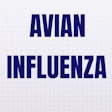
The use of industrial fans in a commercial poultry barn may have been a contributing factor in an outbreak of human H5N1 infections among workers who were involved with the depopulation of a flock where the presence of the virus was confirmed.
Officials with the U.S. Centers for Disease Control and Prevention (CDC) have reported that four people involved with that depopulation process were confirmed human H5N1 cases, while a fifth person is a presumed-positive case.
According to a report from the University of Minnesota’s Center for Infectious Disease Research and Policy (CIDRAP), workers involved with the depopulation of an infected Colorado layer flock had been provided with personal protective equipment (PPE), including Tyvek suits, boots, goggles, gloves and respirators.
However, Julie Gauthier, executive director for field operations with the United States Department of Agriculture (USDA) Animal and Plant Health Inspection Service, said it was possible that the strong breezes coming from the fans in the barn may have made it difficult for workers to keep their productive goggles and respirators in place, and the use of the fans in barns where temperatures exceeded 104 degrees could have spread the virus through windblown feathers and through the air.
While no official agencies previously specifically mentioned the location of the farm where the human infections took place, beyond that it was in northeastern Colorado, the CIDRAP report identified it as a Weld County operation with approximately 1.8 million chickens.
According to CIDRAP, all of the patients have only shown symptoms of mild infections and all are in the process of recovering.
To learn more about HPAI cases in commercial poultry flocks in the United States, Mexico and Canada, see an interactive map on WATTPoultry.com.
View our continuing coverage of the global avian influenza situation.


















